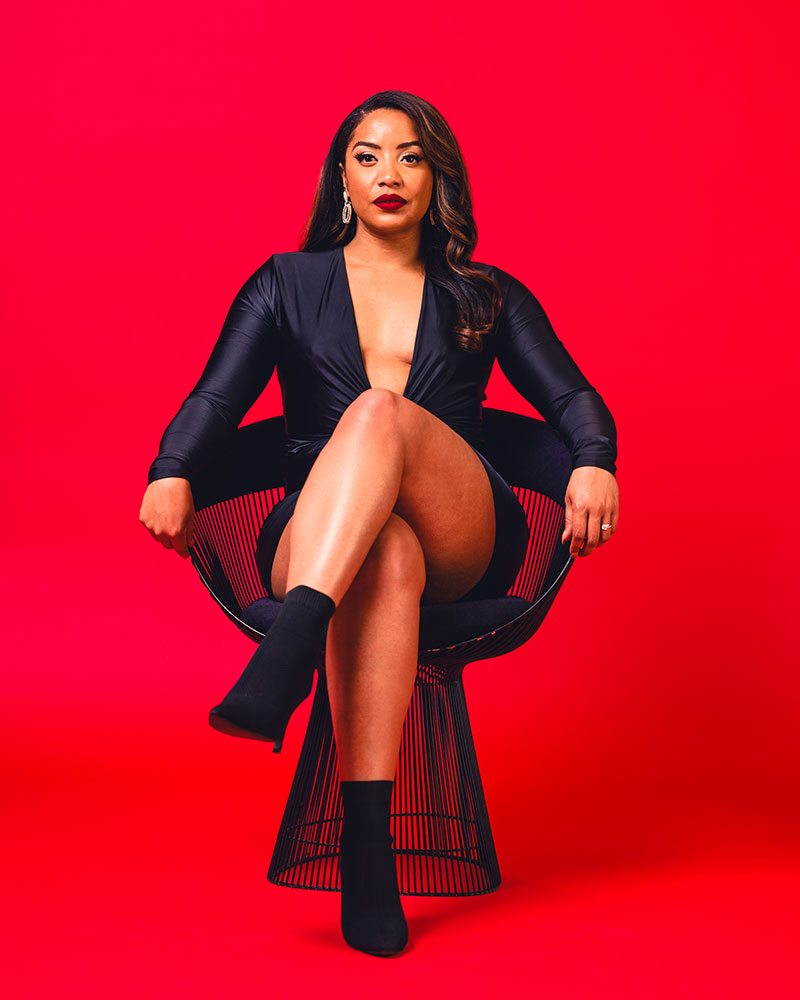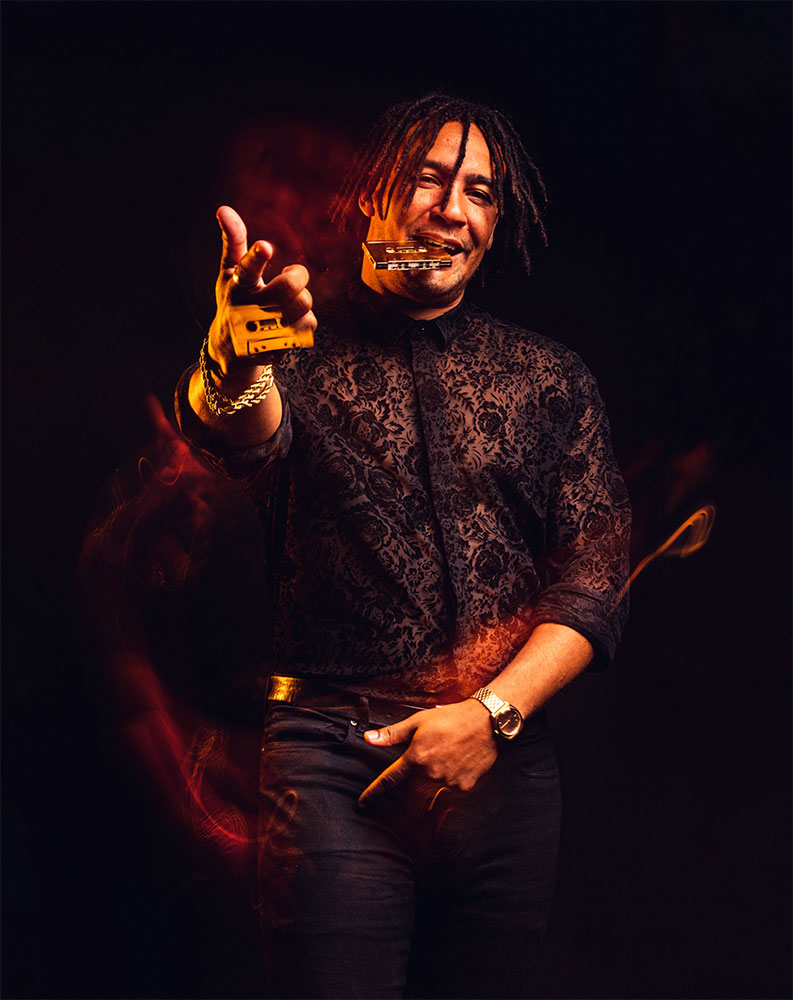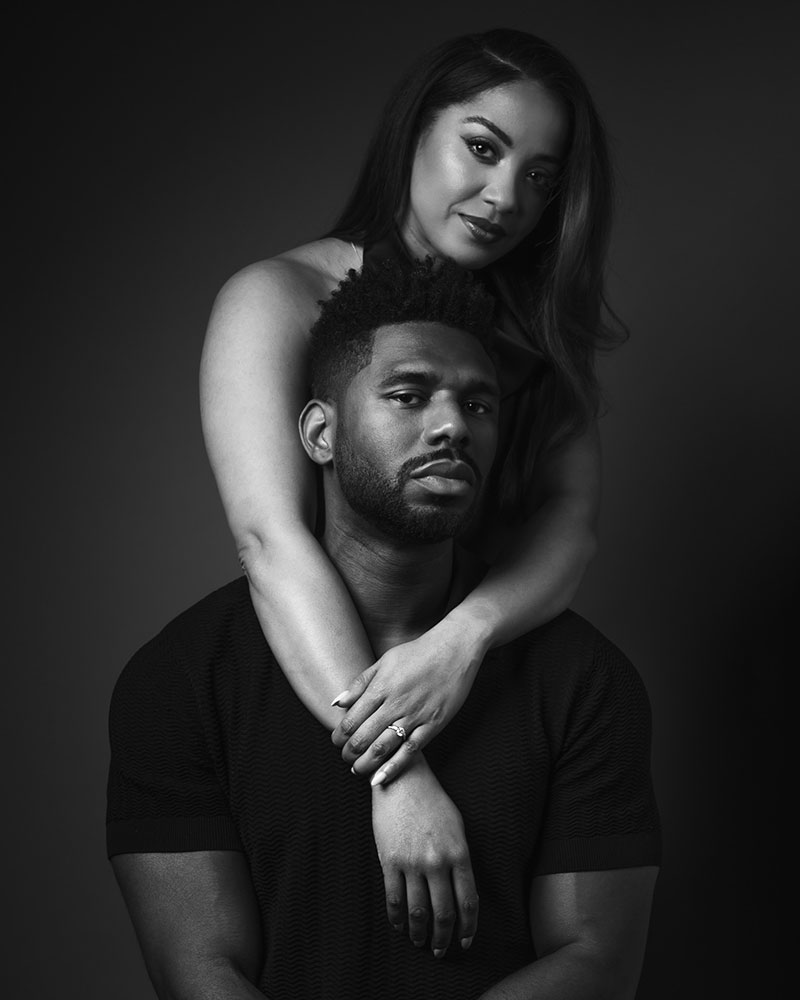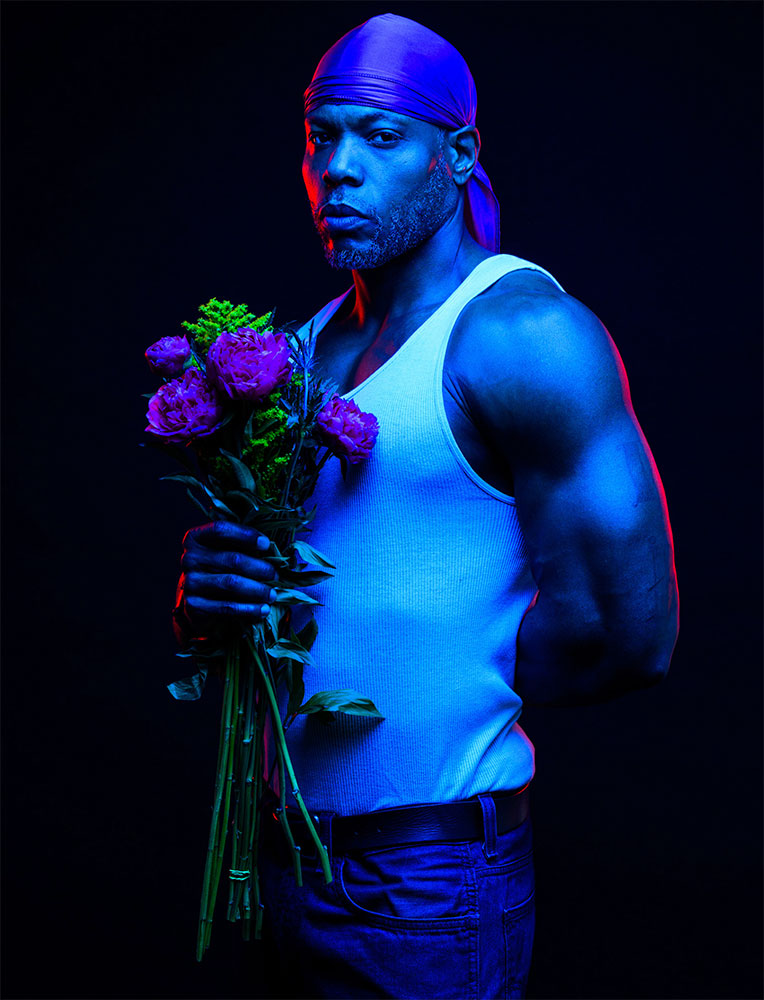Like many others, Brett Brown took his interest in photography to the next level when planning a trip to Europe. Knowing he wanted to bring a camera, not just a smartphone to document the trip, he bought his first Nikon camera, a D3400. Brett was hooked on not just taking photos but reviewing and editing them as well.

So, when COVID 19 hit and travel was no longer an option, Brett’s passion blossomed, as he started experimenting with self-portraits, which led to photographing friends. Sharing his work on Instagram attracted client requests, which eventually led him to establish Brett Brown Photography. Life drastically changed when Brett appeared on the Netflix series Love is Blind and married his wife Tiffany.
Bringing the Basics to the Fore
“I am very much an autodidact,” says Brett. His career outside of photography is in 3D art & design where he worked in the video games and footwear design industry. He notes that most of what he knows professionally is self-taught, by reading blogs and watching a lot of YouTube videos.
“With my background in 3D modeling, I already knew the basic principles of lighting as well as things like form and composition. I also had a lot of experience using photoshop in my career. So, when it came down to learning how to take good photos, it was more of a technical exercise than anything.“

Choosing the Right Gear
We asked Brett what made him decide to choose a Nikon for his first camera. He says that Nikon was always top of mind, having remembered the commercial’s he’d seen on TV as a kid.
“I think they subconsciously registered somewhere in my brain, so when I started looking for a camera, Nikon was the first brand I looked at. As I learned more about the various camera models and saw the picture quality and features, I was sold.”
Moving to Mirrorless
Migrating to mirrorless has been a game changer for Brett. Having resisted the initial move, once he made the leap to mirrorless, there was no going back. “Being able to see what my photo would look like with the correct exposure through my viewfinder was huge. I can shoot so much faster and it makes the process much more intuitive,” he says.
In the two years he’s been shooting mirrorless, Brett went from the Z 5 to the Z 6 to the Z 6II. “Each camera was great for my needs at the time,” he says, “but once I started working with video, the benefits of upgrading to the Z 6II became apparent. The photo quality is excellent and the increase in the number of autofocus points is great.”
“Because I’ve been doing more video work recently, I’ve enjoyed the 4K resolution with no crop at 30 fps. I do a mix of photo and video, so I needed a camera that was great at both and the Z 6II is perfect for my needs,” he adds.
Other favorite features of the Z 6II include the built-in VR image stabilization, especially when he’s shooting video and using the SnapBridge app to download images directly to his phone to quickly share them on social media.

“I’m loving the f/1.8 versions of both the 50mm and 85mm NIKKOR Z lenses. Both are very light and compact which makes them great for traveling or shooting on the go. The focus is sharp with no distortion and the bokeh is beautiful.”
Stepping In front of the Camera
“I guess I started doing self-portraits primarily because it allowed me to learn and work totally at my own pace. If I have an idea or just want to try something new, it’s much easier to get in front of the camera myself instead of hitting someone up and hoping they’re available and patient enough for me to experiment. I also think it’s a way to generally get more comfortable with yourself. I also love the surprise element when people see a portrait of me and ask who took it and I tell them I shot it myself!”

Turning his Camera on Others
Having a great eye for posing, composition, color and lighting is so important to a portrait photographer. “I think these attributes all work together to make a great picture. It’s what separates just mindlessly snapping the shutter from taking great photos. Each attribute takes time and repetition to become great at. I’m definitely aware of all of these not only when I take a picture but when I’m editing as well.” Brett explains.
Brett does admit that posing is a different type of skill—one that develops from experimenting with self-portraiture, learning how to pose yourself. “If you’re shooting someone else, being comfortable giving direction and making them feel comfortable takes practice and most importantly, people skills. Outside of the technical ability I think making your subject feel comfortable is a big part of getting a great portrait,” he says. Brett adds: “One of the things I enjoy most about photography is that it gives me the chance to work with people in real time which is a nice change of pace from my usual work schedule”.

Brett Brown
Brett Brown is a self-taught photographer, 3D designer and Design Director based in Portland, OR. As a lifelong autodidact, he’s pursued many creative pursuits including a career in the video games industry as a 3D artist to most recently working as a 3D footwear designer & Design Director at some of the biggest footwear brands in the world. With his background in 3D modeling & rendering, he’s been able to apply his knowledge of form, composition, and color into his photography to create striking images. In addition to his creative pursuits, he also appeared in season 4 of the hit Netflix series, Love is Blind.
